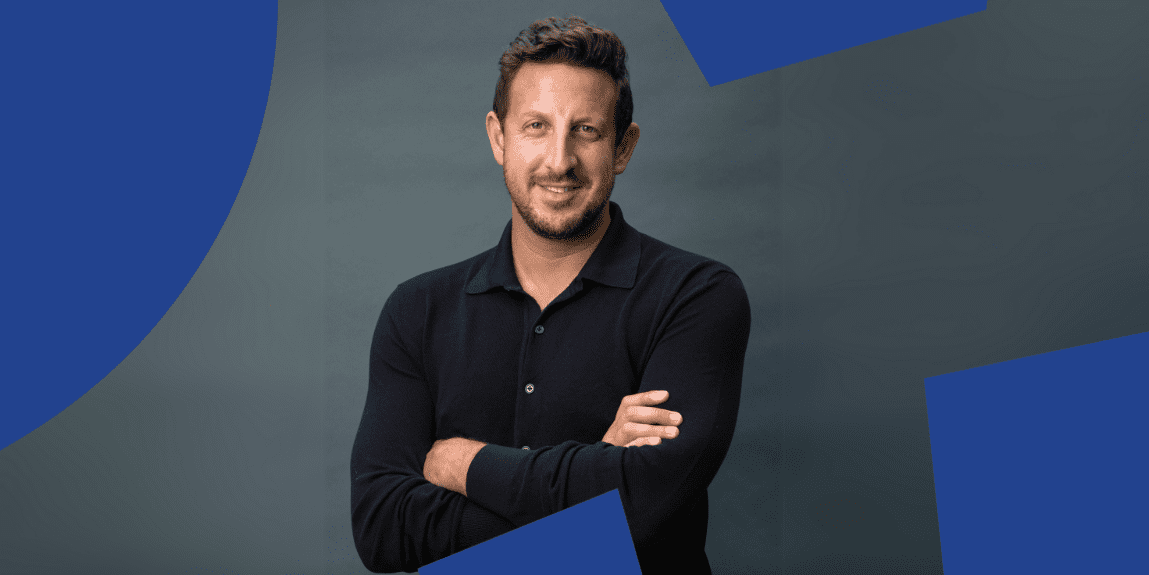

There’s not many inventions that gain immediate traction. We laughed when people in the late 1990s carried mobile devices the size of a shoulder bag and history is littered with examples of what happens when societal thresholds lag technological thresholds. In some cases, they eventually catch up. In others, they never do or at least only do when it is too late for the prototype to reap the rewards.
That’s exactly where we stand now with AI, Open AI’s former head of go-to-market Zack Kass told a rapt audience at Trackunit Next earlier this month. And society’s willingness to embrace AI will determine to what degree it will infiltrate everything we do.
“We are seeing this divergence of societal threshold and technological threshold, which basically led me to the question of how and why does the societal threshold move,” Kass said. “Often, societal thresholds don’t move when technological thresholds move too fast.
“In a world where technological thresholds are moving exceptionally fast, the most important question we can ask is not what can a machine do? It’s what do we want that machine to do.”
Kass said that new technologies are not always accepted by society solely on the basis that they work.
A historical example of this can be found in the introduction of elevators, he said. In 1854, Elisha Otis invented a safety mechanism to prevent free-falling, making elevators safer. Despite the breakthrough, people hesitated to use them.
“Otis Elevator met the technological threshold — it built a machine that actually worked empirically,” said Kass. “But they hadn’t met the societal threshold. They couldn’t convince people to ride it.”
To resolve this, Otis made three key changes. Otis added a mirror, introduced music and perhaps most importantly, was to “add an operator in the elevator, a physical person, who is by the way, not necessary to manage the machine, but just to give people a sense of human agency,” said Kass.
“Humans have an exceptional tolerance for human failure, and we have none for mechanical failure.”
These adjustments made people feel comfortable, and eventually, elevators became commonplace, he said.
Kass compared the introduction of elevators to today’s struggle with autonomous vehicles.
“In the US, 50,000 people will die on our roadways this year, 7,000 of those are children,” he said. “And yet autonomous vehicles poll at 25% approval.”
Despite their potential to reduce accidents, people have remained skeptical. He attributed this hesitation to three factors. First, the human attachment to control.
“There is a visceral feeling of excitement getting into a car, putting your foot on the pedal, and turning the wheel,” he said. “And a lot of people can relate to this.”
Second, the rapid pace of technological progress prevents public perception from keeping up. “As autonomous vehicles have gotten really good, the popularity for it has improved zero,” said Kass. “What’s really incredible is it still polls at 25% approval a year and a half later, largely because humans don’t risk adjust well.”

People tend to fear technologies they don’t fully understand, even if they are demonstrably safer than existing alternatives. Finally, the biggest factor is human perception of failure.
“Humans have an exceptional tolerance for human failure, and we have none for mechanical failure,” Kass said. “It’s the reason that 1.3 million people can die on roadways every year, yet if a Tesla swerves into the wrong lane, there is an outcry to shut the whole program down.”
Despite these hurdles, Kass believed AI will ultimately be integrated into everyday life, just as elevators were. He envisioned a world where AI is as widely accessible and affordable as the internet.
“We are headed toward a world where intelligence truly feels entirely free,” he predicted, likening it to the transition of electricity and running water from luxury to necessity.
Beyond mere affordability, Kass believes AI will unlock human potential.
“In a world where AI starts to commoditize most of our knowledge and skills, it may actually drive us to just be far more humanistic,” he said. Rather than replacing human workers, AI will augment them, enabling people to focus on roles that emphasize emotional intelligence, creativity, and complex decision-making.
Beyond productivity gains, Kass said AI will contribute to economic equity.
“Every generation’s great privilege and honor is to pass their luxuries to the next generation as commodities,” he said. He saw AI democratizing education and healthcare, making high-quality services available to more people.
“Our great-grandparents spent about 40% of their wages on food,” said Kass. “Our generation in the developed world spends about 10%.”
“The same thing will happen with AI-driven services—it’s going to get cheaper and more widely available,” he predicted. As AI costs drop, the benefits will become accessible to more people, reducing disparities in access to information, education, and healthcare.
Trust plays a significant role in the adoption of new technologies. Kass said that the success of any transformative innovation is dependent not just on functionality but on public perception.
‘If we can supercharge the way we conduct research, we can accelerate discoveries in everything from medicine to clean energy. This isn’t just about making processes more efficient—it’s about fundamentally changing what is possible within a single human lifetime.’
“Even if autonomous vehicles were statistically proven to be ten times safer than human-driven cars, it wouldn’t matter unless people trusted them,’ he said. “There was a time when people thought flying was wildly dangerous, but today it is one of the safest ways to travel. This wasn’t just because planes became safer—it was also because airlines built trust through regulations, pilot training, and public demonstrations.
“We need to think not just about making AI powerful but also about making it understandable and trustworthy to the average person.”
In addition to changing the way people interact with technology, Kass expected AI to be a driving force for economic transformation with the potential to significantly lower costs in nearly every sector, leading to increased productivity and access to previously exclusive services.
“AI is going to change the fundamental economics of industries like healthcare, education, and manufacturing,” he said. “We are already seeing AI-powered tools reducing the cost of legal services, medical diagnostics, and research.
“As AI improves, these services will become not only more affordable but also more widely available to people who were previously priced out.”
One of the biggest potential shifts, Kass said, is in scientific research. “If we can supercharge the way we conduct research, we can accelerate discoveries in everything from medicine to clean energy. This isn’t just about making processes more efficient—it’s about fundamentally changing what is possible within a single human lifetime.”
Beyond economic implications, Kass said AI will free humans from routine work, allowing them to focus more on creativity, innovation, and personal fulfillment.
‘In a world where technological thresholds are moving exceptionally fast, the most important question we can ask is not what can a machine do? It’s what we want that machine to do.’
“For centuries, our productivity has been tied to how many hours we work, but AI is about to flip that equation—productivity will be about how well we leverage intelligence, not just time,” he said. “Imagine a future where doctors spend more time with patients and less time on paperwork, where teachers can focus on mentoring students instead of grading assignments, where artists and writers can push the boundaries of their craft without being bogged down by administrative work.”

This shift, he acknowledged, will require an adjustment period. “We are so used to measuring our worth by how much we work, but AI is going to challenge that. It will force us to ask: if we no longer have to work as much for survival, what will we choose to do with our time?’
Kass acknowledged that while AI presents immense opportunities, it also requires responsible governance.
“AI is a tool, and like any tool, it can be used for both good and harm,” said Kass. “That’s why we need to establish strong frameworks that ensure it is used responsibly.”
One of the biggest challenges is keeping regulations up to speed with technological advancements. “Regulations often lag behind innovation,” he said. “This means we need to take a proactive approach to AI governance rather than waiting until problems arise.’
At the same time, he warned against excessive regulation that could stifle innovation. “If we regulate AI too aggressively, we risk falling behind in a global race. The goal is to create policies that maximize benefits while mitigating risks.”
The resistance AI faces today is not unique. Just as society hesitated before accepting elevators and automobiles, AI adoption is currently constrained by psychological and emotional barriers. However, history shows that when these obstacles are overcome, technologies can become essential to everyday life.
“We are never going to be more challenged to learn more in our life than we are right now,” said Kass. “But if we embrace adaptability, curiosity, and courage, we are going to experience a truly transformative era in human history.”
If AI reaches full societal acceptance, it could lead to a world that is not only technologically advanced but also more human-centric, fair, and accessible for all.
While the societal threshold for AI is a major challenge, humans have throughout history demonstrated resistance to disruptive technologies, only to later integrate them seamlessly into their daily lives. He draws comparisons between AI and past innovations such as the telephone, the internet, and even electric streetlights, which were met with skepticism before becoming indispensable.
This phenomenon, Kass said, is a product of human psychology.
“We’re hardwired to be risk-averse,” he said. “When faced with a new technology, we don’t ask ourselves, how will this improve my life? We ask, what can go wrong? And this mindset slows adoption, even in cases where the technology is safer or more efficient than what came before.”

